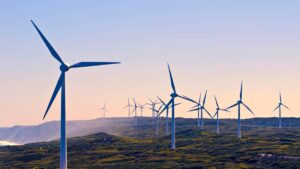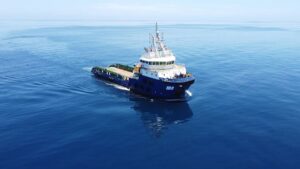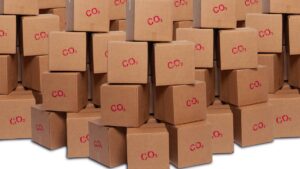Green Energy: Blackstone launches nickel traceability system at Vietnam project

Pic: Thana Prasongsin / Moment via Getty Images
Blackstone implements nickel traceability system
Blackstone Minerals has partnered with UK headquartered Circulor Ltd to establish a full nickel and cathode precursor traceability system with dynamic CO2-e and environmental, social and governance (ESG) tracking for its Vietnam Ta Khoa assets.
The company says the partnership will enable it to demonstrate compliance with sustainability metrics for mining through to the Ta Khoa Refinery (TKR) finished product.
Dynamic ESG metrics such as CO2 intensity, biodiversity impact, water use and energy mix, will be digitised from project samples and made available for potential downstream markets.
Circulor and Blackstone (ASX:BSX) will collaborate to establish a reliable chain of custody, using Traceability-as-a-Service (TaaS) technology and providing the company with the ability to communicate the ESG “passport” of its products and operations with downstream customers.
Ethically sourced nickel at Ta Khoa
BSX chief executive officer Scott Williamson said the partnership with Circulor is at the “cutting edge” of an industry movement towards increased transparency and traceability of raw material supply chains.
“The end customer will ultimately demand and preferentially consume ethically and responsibility sourced nickel, which we believe the Ta Khoa Project inherently possesses,” he said.
“Beyond tracing supply from the Ta Khoa mine, we are pleased that our partnership with Circulor is also aligned with Trafigura, one of the largest global commodity traders and potential feedstock supplier for the Ta Khoa Refinery.
“Trafigura has also recently announced a collaborative partnership with Circulor and this commitment to tracking sustainability metrics is reflective of Blackstone’s expectation of all potential feedstock suppliers of the Ta Khoa Refinery.”
Partnership to facilitate opportunities in Asia and Australia
Circulor business development director Yue Jin Tay said as the company expands into Asia and Australia, it is “excited about the possibilities this partnership brings.”
“With the security of supply of critical minerals gaining increasing focus, helping Blackstone provide transparency for both provenance and ESG performance enables them to become a supplier of choice in the region.
Pure Hydrogen acquires 24% interest in H2X Global
Australian East Coast clean energy company Pure Hydrogen (ASX:PH2) is expanding its investment in the hydrogen sector by acquiring a 24% interest in hydrogen fuel cell vehicle company H2X Global.
It is also establishing Pure X Mobility Pty Ltd as an entity for the development of hydrogen fuel cell-powered truck and buses for use in the Australian market.
Pure Hydrogen has signed a term sheet setting out that PH2 will receive a 24% interest in H2X shares for 8.6 million shares in PH2, which will have some escrow conditions.
Additionally, Pure Hydrogen will also receive options to increase it interest to 48% in H2X, with the agreement being subject to customary condition precedents and is expected to close in a few weeks.
Shares jumped 6.9% to 31 cents on the news.
“A game-changer for the industry”
Pure Hydrogen managing director Scott Brown said the efficiency provided by hydrogen in new automotive technology is a game-changer for the industry and H2X is at the forefront of this ground breaking innovation.
“Hydrogen has the potential to cut fuel costs by up to 30 per cent when compared with traditional diesel. Partnering with H2X not only makes good commercial sense but it also puts Pure Hydrogen in the driver’s seat to capitalise on new and evolving hydrogen technology.”
The two companies have signed a preferred supplier agreement where Pure Hydrogen will be the preferred supplier of Hydrogen to H2X, underpinning H2X’s plans to develop a variety of Hydrogen Fuel Cell powered vehicles.
Pure Hydrogen’s hydrogen logistics experience will secure the re-fuelling requirements of vehicles being developed by H2X.
Additionally, Pure Hydrogen will provide through its new entity Pure X Mobility Pty Limited trucks for deployment for back to base operations such as waste disposal and concrete agitator trucks that the Company plans to bring to market.
Carnegie launches new wave energy product
Carnegie Clean Energy (ASX:CCE) has launched a wave energy product called the MoorPower™ Scaled Demonstrator Project, offering a solution to the challenge of securing clean and reliable energy for offshore activities.
The company said its initial target market for MoorPower™ is offshore vessels such as feeding barges for the aquaculture sector, but the future market is broader and includes the many other offshore operations that require energy.
Over the next two years, Carnegie will design, install, and operate a scaled demonstrator of the MoorPower™ technology just offshore from its headquarters and research facility in North Fremantle, Western Australia.
Prototype set for late 2022
In an interview with Stockhead CEO Jonathan Fievev said CCE aims to have the prototype for the scaled demonstrator project ready by late 2022.
“We want to operate that for a period of time to experience different wave conditions and ensure it performs acceptably before we integrate it with an operating sea barge,” he said.
Supported by a $1.35m cash injection from the Blue Economy Cooperative Research Centre (CRC), the MoorPower™ technology is consistent with Carnegie’s focus on the development and commercialisation of proprietary technologies to cost-effectively convert wave energy into electrical energy.
As the aquaculture sector moves operations further offshore, operations such as feeding barges will no longer have access to shore-based power, Fievev said.
Therefore, the reliance on diesel generators comes with many associated costs, carbon emissions and environmental risks, including fuel storage and spillage risks while refuelling offshore.
“We joined the blue CRC economy last year and we understood that their move to more offshore locations fit perfectly with our wave energy technology in the sense that as they go further offshore, they are more exposed to waves and may as well turn those waves into electricity,” Fievev said.
“It seemed like a great opportunity.”
Related Topics
UNLOCK INSIGHTS
Discover the untold stories of emerging ASX stocks.
Daily news and expert analysis, it's free to subscribe.
By proceeding, you confirm you understand that we handle personal information in accordance with our Privacy Policy.








